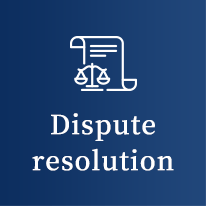Compulsory auction procedures for real estate
- 1 Petition for Compulsory Auction
- 2 Procedure for a Lump-sum Auction
- 3 Provisional Disposition Prohibiting the Transfer of Possession
- 4 Order of Commencement
- 5 Bidding Procedure and Decision of Permission of Sale
- 6 Repeated Bidding and Special Sale
- 7 Payment of the price and registration of transfer of ownership
- 8 Implementation of distribution
- 9 Delivery order
- 10 Compulsory execution of delivery of real estate
Petition for Compulsory Auction
A petition for real estate execution shall be filed in writing. For an auction procedure, the district court (including its branch offices) that has jurisdiction over the location of the subject real estate is the court of jurisdiction, and a petition shall be filed with said court. This court is called the execution court. A title of obligation with a certificate of execution attached must be attached to the petition for real estate execution. In addition, when petitioning for a compulsory auction, it is necessary to pay a prepayment and a petition fee in the amount set by the court. If the amount of real estate available for purchase minus the amount of priority claims and execution costs is zero or negative, the creditor will not receive repayment, and in such a case, the execution procedure will be cancelled pursuant to the prohibition of execution without surplus. Currently, due to the decline in real estate prices, there are many cases where a junior creditor is unable to receive a dividend, and in such cases, the auction petition by a junior creditor is often rescinded. In many cases, the clerk of the execution court usually calls the agent for the petition and asks the agent to choose whether to continue the auction with a deposit or to voluntarily withdraw the petition. In most cases, there is no point in continuing the auction by posting a deposit, so you will voluntarily withdraw the petition. However, if the servicer has acquired a security interest with a large amount of claims and wishes to purchase the property by itself, it is possible that you may choose to continue the auction. In any case, the provision prohibiting execution without surplus is a common problem in practice, and requires attention.
Procedure for a Lump-sum Auction
When a mortgagor of land executes a mortgage on the land, it may be possible to sell the land and the building together at a higher price if the land and the building are sold at once. In such a case, the system of petition for a lump-sale is a system that allows the land and the building to be auctioned together even if there is no mortgage on the building existing on the land (Article 389 of the Civil Code). In order to file a petition for a bulk sale under Article 389 of the Civil Code, the following conditions must be met.
- No building must exist on the land at the time of creation of the mortgage. This also includes cases where a building that existed at the time of hypothecation was reconstructed and no additional mortgage was created on the reconstructed building.
- A building was constructed on the mortgaged land after the creation of the mortgage. The owner of the building on the mortgaged land is not required to be the owner of the building. If the owner of the building has rights that can be asserted against the mortgagor, such rights will be contested by an objection to execution after the issuance of the mortgage.
Provisional Disposition Prohibiting the Transfer of Possession
After filing a petition for compulsory auction, a bailiff will conduct an investigation of the obligor’s property. The obligor may intentionally transfer the property to another person or transfer possession of the subject matter for the purpose of evading compulsory execution (in the case of execution of surrender, a person other than the obligor may be living in the leased building). As an obligee, if such a fact comes to light, or if there is a possibility that possession or ownership may be transferred to a third party, it is necessary to take measures to prevent the obligor from interfering with execution, such as applying to the court for a provisional disposition prohibiting the transfer of possession. However, the creditor (lessor) cannot immediately enforce against the squatter, but must file another lawsuit to obtain a favorable judgment, which significantly increases the burden on the creditor and delays the enforcement procedure. This can also cause delays in the execution procedure. If there is a possibility that the debtor may transfer the possession or conceal the property, it is essential to file a provisional disposition of prohibition of transfer of possession or prohibition of disposition.
Order of Commencement
If a petition for compulsory execution is filed and the petition is complete, the court will issue a commencement order for a compulsory auction, and the court clerk will commission the competent Legal Affairs Bureau to register the seizure of the subject real estate. An authenticated copy of the commencement order will be served upon the debtor. In cases where an auction procedure and a delinquent disposition procedure conflict, the seizure-first principle will, in principle, work, and the procedure in which the seizure is made first will proceed. The execution court will order a bailiff to investigate the current status and submit a status investigation report, and will also order an appraiser to evaluate the subject property and submit a valuation report. The status investigation report will include the current status of the real estate, such as the current land title, type and structure of buildings, etc., as well as the person who occupies the real estate, whether or not that person has the right to occupy the real estate, and whether or not the purchaser has any rights that must be assumed by the purchaser, and will also include photographs, etc. of the real estate. The valuation report will describe the surrounding environment of the auctioned property and its valuation, and will be accompanied by drawings of the real estate. In addition, the court clerk investigates the rights to the subject property (whether or not there are any security interests or usufructuary rights, whether or not there are any leasehold interests, etc.) and prepares a description of the property. The court clerk keeps a copy of the property description, the current status investigation report, and the valuation report (the so-called three-piece set) at the execution court and makes them available to the public.
Bidding Procedure and Decision of Permission of Sale
After the above three sets of items are in place, the execution court will establish the standard sales price as the price at which the real estate will be sold. The amount obtained by subtracting 20% from the base sale price will be the purchase price. The court clerk determines the date, time, place, and method of sale, and publicly announces the date, time, place, etc. of the sale. In the case of periodic bidding, the prospective purchaser shall pay a deposit equivalent to 20% of the standard sales price, and submit a written bid stating the amount of the bid and a certificate of transfer of the deposit, etc. to the court execution officer within the bidding period. The bids are opened by the court execution officer on the bid opening date, and the highest bidder becomes the highest purchase offeror, and the court issues an order of permission of sale on the sale decision date.
Repeated Bidding and Special Sale
If no bids are received at or above the purchase price after the periodic bidding, another round of bidding will be conducted, and if no prospective purchaser appears, a special sale will be held. In the special sale, the first person to make an offer to purchase the property may purchase the property if a potential purchaser comes forward within the period of the special sale at or above the price set by the court. If no potential purchaser appears after the bidding and special sale procedures, the court may cancel the auction procedure.
Payment of the price and registration of transfer of ownership
When the order of permission of sale becomes final, the purchaser must pay the price to the execution court by the deadline set by the court clerk. Since the deposit provided by the purchaser at the time of the purchase offer can be applied to the price, the purchaser is to pay the purchase price minus the amount of the deposit. The purchaser acquires ownership of the real estate upon completion of the payment of the purchase price. If the purchaser does not pay the price, the decision to permit the sale becomes invalid, and the purchaser cannot claim the refund of the deposit. When the purchaser pays the price, the court clerk will commission the Legal Affairs Bureau to register the transfer of ownership to the purchaser and also to register the cancellation of the mortgage, etc. that will be extinguished by the sale.
Implementation of distribution
In cases where payment of a price, such as the price of real property, has been made, the execution court shall prepare a distribution list on the distribution date and distribute dividends based on the distribution list. The scope of creditors entitled to receive liquidating distribution shall be (i) obligees at seizure, (ii) creditors who have made a demand for liquidating distribution by the time limit for demand for liquidating distribution, (iii) creditors of a provisional seizure registered prior to registration of the seizure, and (iv) lien holders, pledgees and mortgagees registered prior to registration of the seizure whose security interest is extinguished by an auction. As for the obligee(s) in foreclosure (i), only the obligee(s) in foreclosure who filed a petition for a compulsory auction or an auction for exercise of a general statutory lien by the time of the expiration of the demand for liquidating distribution is considered to be the obligee(s) in foreclosure, so it is necessary to file a petition for auction by itself. Dividends are paid based on the order of priority stipulated in the substantive law, so if there is a creditor in the above order, the creditors in the subsequent order cannot receive dividends until that creditor receives 100% payment. For example, if the proceeds from the sale of real estate is 100 million yen and the first-ranked mortgagee has a claim of 80 million yen, the second-ranked mortgagee will only be entitled to a dividend after the first-ranked mortgagee has been paid the full 80 million yen. Dividends are equally divided among creditors of the same rank. In the case of tax claims, the principle of priority of tax claims is applied. Therefore, if there are general creditors who do not have security rights and tax creditors, dividends will be paid to general creditors only after full payment is made to tax creditors and the balance is available. The priority of tax claims over creditors with security interests or creditors who have provisionally seized the property is also complicated by the timing of the demand for delivery, and should be examined in detail on a case-by-case basis.
Delivery order
As a purchaser in an auction procedure, the most concern is whether the debtor will properly deliver the real estate after the auction is completed. Therefore, the purchaser may petition the court for an order of delivery only within 6 months from the time of payment of the price. In response to the petition from the purchaser, the execution court will issue an order to the obligor or the possessor of the real estate to deliver the real estate to the purchaser (delivery order). Since an order of delivery is a rather strong order in practice, the purchaser of real estate must remember to file a petition within a period of six months if there is an obligor in possession of the auctioned real estate. In this sense, the six-month period is extremely important. Normally, when a delivery order is issued, it is expected that the debtor will voluntarily move or otherwise take delivery of the real estate. However, some debtors or occupants may continue to take possession of the real estate and not accept delivery despite the issuance of a court order of delivery. In this case, as a purchaser, you will file a petition for compulsory execution of delivery of the real estate.
Compulsory execution of delivery of real estate
When a petition for compulsory execution of delivery of real estate is filed, the bailiff will specify a delivery deadline (the day on which one month has elapsed from the day on which a demand for delivery was made) in advance and give a notice of delivery to the obligor. If the obligor does not deliver the real estate by the deadline for demand for delivery, the bailiff will carry out compulsory execution of delivery of the real estate. In the compulsory execution of delivery of real estate, the bailiff may use a locksmith to unlock the door, remove movables from the building, and use a transporter to move them to a warehouse or other location. In addition, movable property (furniture, documents, etc.) in the building can be sold to a prospective buyer with a set sale date. Pets such as dogs and cats are also treated as movable property and will be sold through the sale procedure if the debtor does not take them back. If the debtor is believed to have a large amount of movable property, the creditor who wishes to file a petition for compulsory execution must have a thorough meeting with the bailiff in advance to determine the appointment of a transporter, a lock picker, a pet picker, the method of removing the piano, and the storage location of the removed movable property. Even though these costs can be claimed from the debtor at a later date, in practice it is unlikely that the debtor will voluntarily reimburse the debtor, and the creditor will ultimately bear the costs (about 1 to 2 million yen in the case of a single house, including bailiff’s fees). Usually, a carrier is selected from a list prepared by the execution court, but an experienced carrier can give you a rough cost estimate by simply explaining the layout, etc. It is also possible to compare several carriers and select the one with the lowest transportation fee.










